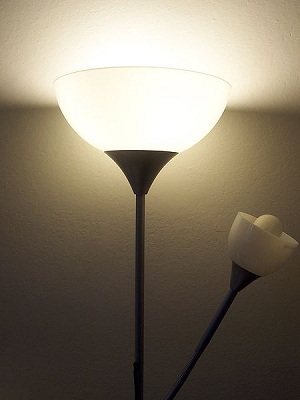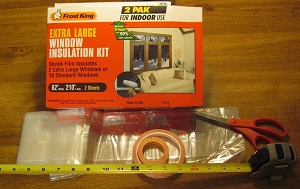9 Easy Ways to Reduce Your Home Energy Use
Maybe you’re a full-fledged tree hugger who’s already drooling over the new Ford Fusion Energi electric hybrid sedan. Or maybe you’re just hoping to save a few bucks on your next electric bill or make your living room a little less frigid during the cold months of winter. Either way, taking steps to reduce your electricity and energy use at home is a smart choice — and the good news is you won’t have to replace all your windows or move to a yurt do it. Here are a few quick and easy projects to get you started.
1. Insulate electrical outlets.
Insulate the electrical outlets in your house that are located on exterior walls. Your local hardware store probably sells foam socket sealers that will help block cold or hot outside air from entering your home. You’ll need a screwdriver to remove the outlet plates or switch plates, but the whole process shouldn’t take more than a few minutes per outlet.
2. Get an energy audit.
Pay attention to your utility bill. Some utility companies occasionally offer a free energy audit, which typically entails a home inspection from a utility employee. If your electric bill seems high and you can’t figure out the reason, getting an audit is a great starting point for investigation; the results will help you understand the factors that may be affecting your energy use, such as drafty windows or a poorly insulated roof. If you’re lucky, the utility company may even throw in a few energy-saving freebies such as low-flow faucet heads or compact fluorescent light bulbs.
3. Switch to fluorescent light bulbs.

Replace your incandescent light bulbs with compact fluorescent bulbs or LEDs. Compact fluorescent bulbs are brighter and more efficient than incandescent bulbs; they may be more expensive up front, but they’ll last much longer. LED lights are another option that’s even more energy efficient; the downside is that they’re pretty pricey (expect to spend $20 or so per bulb). If the light generated by fluorescent bulbs is too harsh or industrial for your taste, try replacing existing incandescent bulbs with incandescent bulbs with lower wattage.
4. Give your fridge a hand.
Vacuum the coils on your refrigerator. Pet hair and dust bunnies accumulate on the coils over time, causing the fridge to have to work harder to get rid of the heat. If you clean off the coils now and then, the fridge will have less work to do and will use less energy.
5. Block off unused heat registers.
Be smart about heating and cooling. Is there a room in your home you rarely use? Is there a register in your laundry room two feet away from the furnace, resulting in a double dose of hot air? In rooms you don’t really need to heat and cool, insert something in the register to block it off and redirect the air flow toward other areas of the house.
6. Close the chimney flue.
If you have a fireplace, make sure the chimney vent is closed, unless you are about to make a fire. This helps insulate your home from warm or cold air, so your heating and air conditioning won’t require as much energy. Closing the chimney flue also prevents wildlife from taking up residence there. Trust us on this one: Having a live raccoon fall down your chimney in the middle of the night is an experience you’d rather omit from your bucket list.
7. Winterize windows and doors.

If you live in a place with long, cold winters and your home is drafty, it’s definitely worth investing in winterizing supplies. Double-sided foam tape can help plug gaps along the edges and bottom of exterior doors and window frames so the wind doesn’t whistle through your kitchen.
If you notice lots of cold air coming through the windows, consider getting a window insulator kit. Most kits contain what looks like a large roll of ordinary double-sided tape and several giant sheets of plastic wrap. Installation is simple. Outline the window frame with double-sided tape, stretch an appropriate-sized piece of plastic wrap over the window, and blow dry the plastic until it tightens up like a drum. Yes, your windows will look a little odd for a day or two until you get used to it, but the difference in warmth is noticeable.
8. Turn down appliances.
Besides your HVAC system itself, the fridge, freezer, and hot water heater are probably the biggest energy users in your home. Check the thermostat in your refrigerator and freezer; your fridge should be set between 37 and 40 degrees and your freezer at about 5 degrees. Hot water heaters are typically set at 140 degrees, but you can probably get away with setting yours at 120 degrees unless you have health concerns that require extra-hot water. For more tips on optimizing home energy use, check out the U.S. Department of Energy website.
9. Insulate hot water pipes.
If you have easy access to your hot water heater, hot water pipes, and heating ducts, insulate them with foam or insulator foil. It’s a little bit of trouble, but the energy-saving results are impressive, especially considering that the materials are relatively inexpensive.
This article originally appeared on Tecca.
More from Tecca:
Top Electric Vehicles: Prius vs. Leaf vs. Volt
Melting buildings could help solve the energy crisis
Futuristic Taiwan Tower to borrow design from a tree, will harness renewable energy